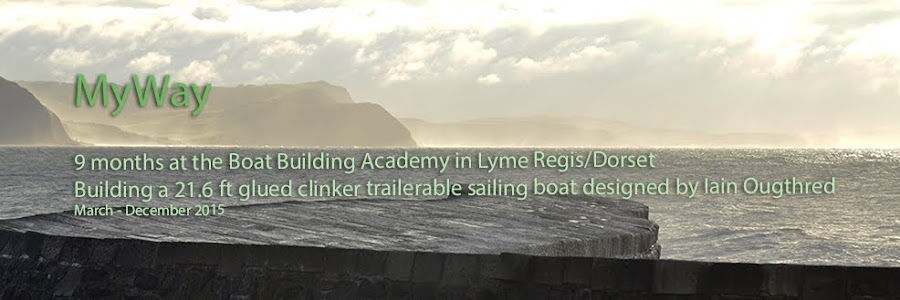20.07.-26.07.15
Producing the 4th and 5th planks
As we decided to get the opportunity to work on every boat Ant and Mark joined me this week and Ross changed to Stevens 12 1/2 Hereshoff.
We started the week making the templates for planks Nr. 4 & Nr. 5 and cutting the pieces plywood we would need. The procedure was the same as described before and Tuesday morning we had the glued planks ready to be shaped. But....
 |
| Ant and Mark working with my dustpreventing multifunctional routerhousjig ver.1.2.5 |
I had the idea, to glue the scarfs with epoxy without added Silica to get bright finished nice gluelines. Good idea but bad mistake. While shaping the planks Ant realized some large gaps inside the scarfs and we found them glued together very badly. After some discussions the decision was felt ....
 |
| The rescarfed and repaired plank no 4 already glued |
To loose not too much time we glued the planks and scarfs already on the hull and so on Tuesday evenening the planks were placed and we could start plank No 5....
...which was sucessful finished on Thursday evening.
After trying different techniques we came back to good old handwork and started scarfing the planks manually again. Only one thing we changed. We piled all 3 plankpieces and scarfed them all in one. A sweaty but also very fast and accurate method.




















